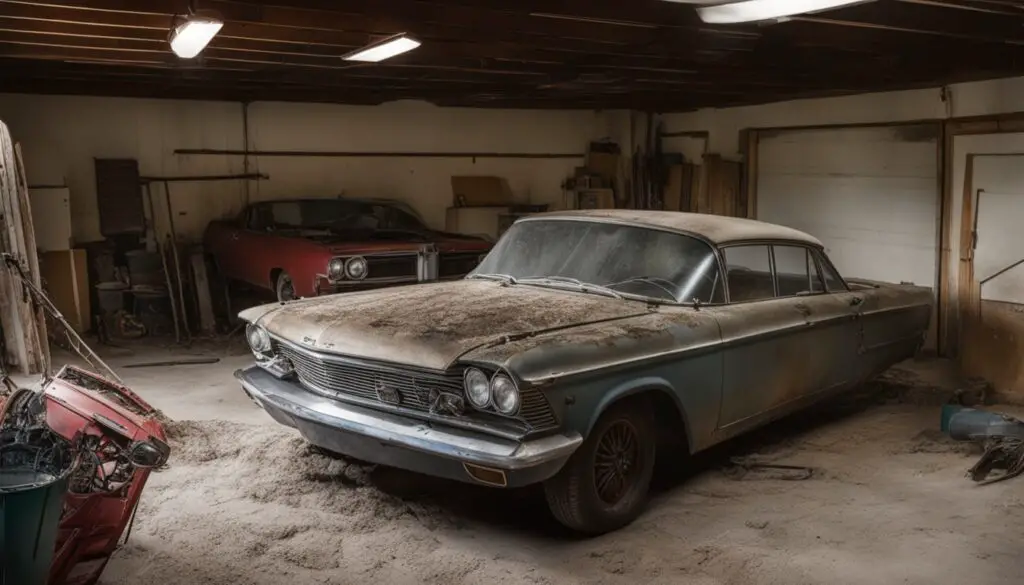
Your Restoration Bible: Classic Car Restoration Guide Unveiled
Welcome to the ultimate classic car restoration guide! If you have a vintage car waiting for a new life, you’re in the right spot. You’ll discover how to restore your car with my expert tips.
Restoring a classic car is a deep journey. It shows the lasting beauty of these older cars. With this guide, everyone from beginners to pros can learn and restore their car’s beauty.
This guide will cover everything about classic car restoration. We’ll talk about the importance of details like alignment and getting the right parts. You’ll learn why every part of the restoration matters. And we’ll explore what makes these cars truly special, from the inside out.
Key Takeaways:
- Restore your classic car to its former glory with expert guidance
- Discover the art of alignment and waiting for the right parts
- Uncover the significance of every component in the restoration process
- Embark on a prophetic adventure in classic car restoration
- Revive the natural speaking of the supernatural in vintage beauties
Getting Started: Buying Your First Project Car
Choosing the right car is key when starting a classic restoration. The best car will save you time and money in the long run.
Classic car restoration is thrilling but tough. It’s wise to skip cars with heavy rust or that are in really bad shape. They might look like a steal, but they often end up costing a lot in repairs.
It’s crucial to plan before diving into a project. Think about the car’s make and model. Some cars are easier to restore than others. Some have lots of after-market support, which makes repairs easier and cheaper.
If you love muscle cars, Mustangs and Camaros are great choices. They have a rich history and parts are easy to find. This means you can bring them back to life more simply.
But, no matter what car you pick, check its condition well. A mostly rust-free car lays a good foundation. Do remember, classic cars might have some rust and wear. Yet, be sure to check how much and if it’s fixable.
Buying a restoration project with less rust and more completeness is a smart move. Starting with such a car can help avoid lots of issues and save money later on. Always aim for the best car your budget allows. This choice is vital for a smooth and fun restoration experience.

Stay tuned for the next section, where we’ll discuss the essential tools and techniques you’ll need for your classic car restoration.
Essential Tools and Techniques for Classic Car Restoration
Restoring a classic car back to its prime needs the right tools and know-how. You’ll use many tools, like wrenches for taking things apart and paint sprayers to add color. Having the correct tools will help you work better and faster.
Yet, knowing how the car works is just as important. The engine, drivetrain, and other systems must work together. You must know how to fix and upgrade these to make your old car run again.
Getting the right parts is also crucial. You might need a new engine piece or a fresh body panel. Always find parts from trusted sellers who have what your car needs.
With the best tools, knowledge of your car’s parts, and quality pieces, you’re set for success. Every twist of a wrench gets your car closer to looking its best again.
FAQ
What factors should I consider when buying a classic car for restoration?
When choosing a classic car for restoration, look at its make, model, and overall condition. Be wary of heavily rusted vehicles or basket cases. These can be costly and time-consuming to fix. Popular choices often include muscle cars like Mustangs and Camaros.
What tools do I need for classic car restoration?
The tools needed for classic car restoration depend on your project. Basic tools like wrenches and screwdrivers are a must. Don’t forget about paint sprayers and sanders. Knowing about the car’s engine, suspension, and more is crucial.
What are the most important mechanical systems to consider when restoring a classic car?
For classic car restoration, focus on the engine, drivetrain, and suspension. Also, look after the electrical and braking systems. Knowing how to fix and improve these parts is key. They are vital for the car’s performance and safety.
